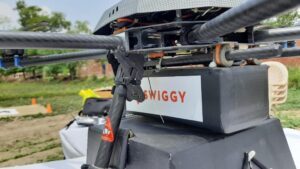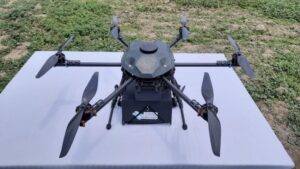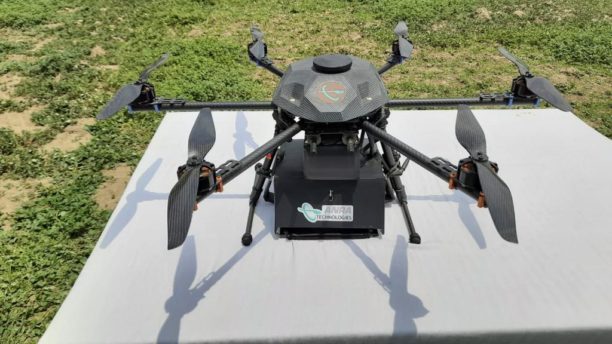
The project has taken months of planning, but the 100 hours of planned BVLOS flights will be instrumental in taking India’s drone industry forward. “The goal is to gather data and make this scalable across India,” explains ANRA Founder and CEO, Amit Ganjoo, in an interview. “To do these BVLOS operations has taken almost two years – but regulators are really jumping through hoops to make this a reality.”
ANRA’s flight team launched its first sortie on June 16, 2021. For the next several weeks, the flight team will conduct BVLOS food and medical package deliveries in the Etah and Rupnagar districts using ANRA SmartSkies technology and SmartSkies DELIVERY, ANRA’s software solution that connects customers, delivery services, and other stakeholders.
The first delivery was a box of chocolates, says Ganjoo – but the team is looking ahead to enabling medical drone delivery, a significant need especially during the current pandemic. “ANRA’s deep roots in India and my personal family ties make me especially proud to have contributed to this historic moment for India, government stakeholders, and our partners,” Ganjoo stated in a press release. “Knowing our technology may soon help deliver food and medical packages to underserved populations are what motivates and unifies our team.”

“ANRA Technologies and its partners intend to leverage gathered data and key learnings from the flights to support the development of India’s nationwide operational UAS Traffic Management (UTM) platform called Digital Sky,” says the press release. “The outcomes will enable industry, government, and regulatory stakeholders to determine the necessity to support interaction and data exchange between UTM services suppliers while assessing the suitability and applicability of existing technology capabilities.”
“Additionally, the consortia will seek to understand any trade-offs between interoperability and open implementations and specific technical integration requirements for functionality while determining acceptable performance envelopes for latency, reliability, availability times, and ‘near real-time’ aspects of communications. It will also seek to establish how other key emerging standards, including Remote-ID and Detect and Avoid (DAA), may be integrated as part of an overall Digital Sky UTM framework.”
India is looking at the operations to fast-track its policies and prepare the local industry for a significant push into the drone services segment globally: and Ganjoo says that the Indian drone industry is ready. “There is a lot of buzz and creation,” says Ganjoo. “The industry is getting started.” ”
“At the end of the day, this is going to be like Uber Eats or Door Dash – whether it’s food delivery or other items, whether it’s middle mile or last mile, it’ll happen.”
Miriam McNabb is the Editor-in-Chief of DRONELIFE and CEO of JobForDrones, a professional drone services marketplace, and a fascinated observer of the emerging drone industry and the regulatory environment for drones. Miriam has penned over 3,000 articles focused on the commercial drone space and is an international speaker and recognized figure in the industry. Miriam has a degree from the University of Chicago and over 20 years of experience in high tech sales and marketing for new technologies.
For drone industry consulting or writing, Email Miriam.
TWITTER:@spaldingbarker
Subscribe to DroneLife here.
